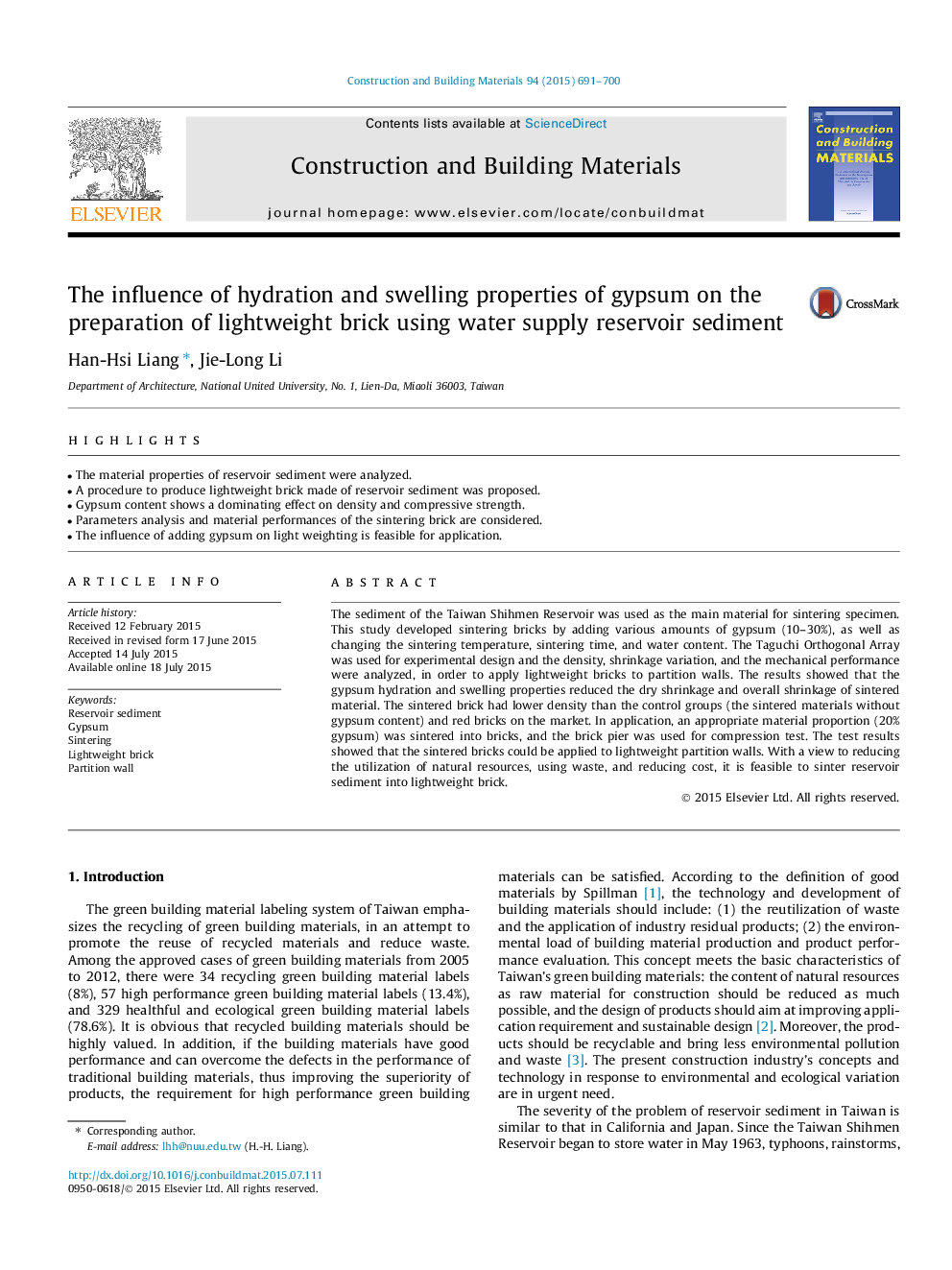| Article ID | Journal | Published Year | Pages | File Type |
|---|---|---|---|---|
| 6720742 | Construction and Building Materials | 2015 | 10 Pages |
Abstract
The sediment of the Taiwan Shihmen Reservoir was used as the main material for sintering specimen. This study developed sintering bricks by adding various amounts of gypsum (10-30%), as well as changing the sintering temperature, sintering time, and water content. The Taguchi Orthogonal Array was used for experimental design and the density, shrinkage variation, and the mechanical performance were analyzed, in order to apply lightweight bricks to partition walls. The results showed that the gypsum hydration and swelling properties reduced the dry shrinkage and overall shrinkage of sintered material. The sintered brick had lower density than the control groups (the sintered materials without gypsum content) and red bricks on the market. In application, an appropriate material proportion (20% gypsum) was sintered into bricks, and the brick pier was used for compression test. The test results showed that the sintered bricks could be applied to lightweight partition walls. With a view to reducing the utilization of natural resources, using waste, and reducing cost, it is feasible to sinter reservoir sediment into lightweight brick.
Keywords
Related Topics
Physical Sciences and Engineering
Engineering
Civil and Structural Engineering
Authors
Han-Hsi Liang, Jie-Long Li,
